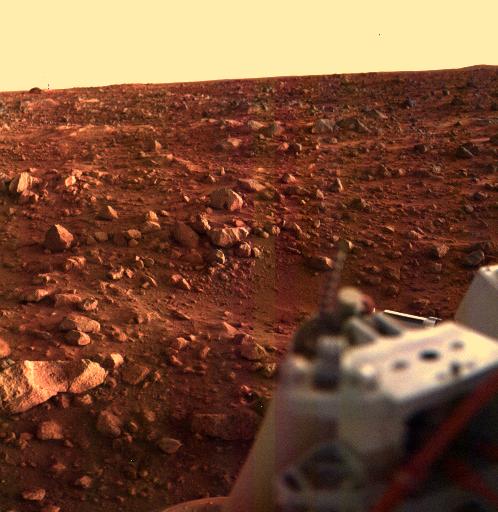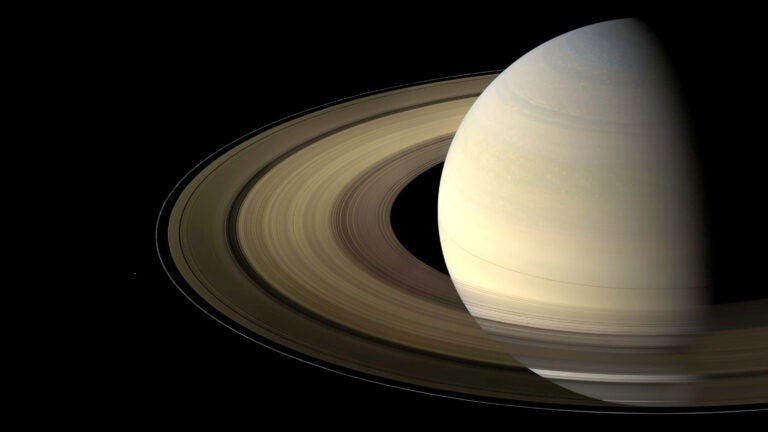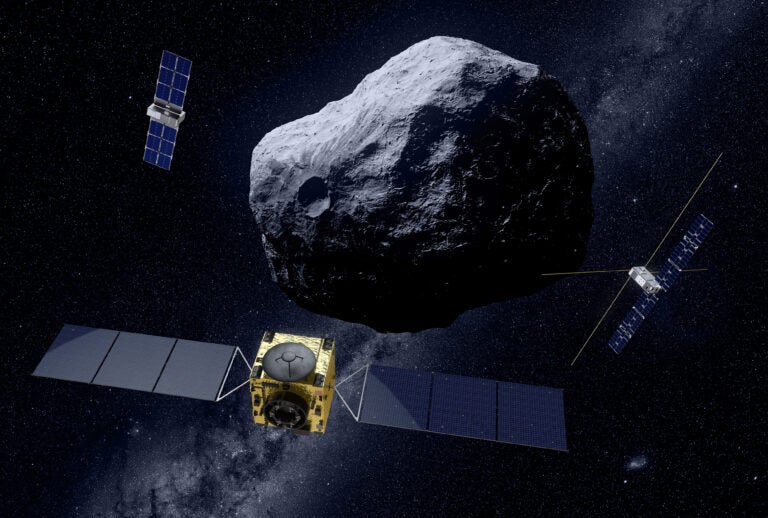
This year marks 100 years since the births of two pioneers in the search for life on Mars. Joan Oró and Gilbert V. Levin were part of NASA’s Project Viking, which delivered twin spacecraft to Mars in 1976. Each consisted of an orbiter and a lander probe, carrying a suite of scientific instruments designed to look for life on Mars.
While both Oró and Levin worked directly on instruments for Viking, they had very different interpretations of the mission’s scientific findings. I was fortunate to meet both during the early 2000s. I talked with them extensively about the experiments conducted by the two landers —Viking Lander 1, which touched down at a site called Chryse Planitia on July 20 (exactly 7 years after humans first landed on the Moon) and Viking Lander 2, which set down at Utopia Planitia about 4,000 miles (6,500 kilometers) away on September 3.
One of the most perplexing Viking results was from an instrument called the labeled release (LR) experiment, because it produced seemingly positive results for life at both landing sites. Viking’s other instruments (and scientific consensus) disagreed, but Levin, the LR’s principal investigator, was still calling it a positive result some three decades after the experiment had come to an end. He remained convinced that he’d discovered life on Mars for the rest of his life.
Reading the rocks
Born October 26, 1923, in Lleida, Catalonia, Spain, Joan Oró was a biochemist whose work focused on the origins of life. His research took place largely at the University of Houston. In 1959, Oró demonstrated that adenine — one of a handful of nitrogenous bases that DNA and RNA use to carry genetic information — could form from simpler chemicals in the absence of biology. Six years prior, in a famous experiment at the University of Chicago, graduate student Stanley Miller and chemist Harold Urey had demonstrated abiotic (without biology) synthesis of various biologically important chemicals under conditions thought to have characterized the early Earth. Oró’s achievement continued this path toward understanding how life might have begun.
Nearly a half century later, I was doing research in that same university department, connected with my astrobiology training based at NASA’s Johnson Space Center. When I met Oró in the early 2000s, he was a Professor Emeritus, spending part of the year in Houston and part in Barcelona, work he continued until his death in 2004. During one of his visits in Houston, I interviewed Oró about an instrument he worked on called the gas chromatograph mass spectrometer (GCMS), which examined the regolith at both Viking landing sites to determine its makeup, in particular whether it contained any organic materials — the building blocks of life.
It’s in the air
Born April 23, 1924, Gil Levin developed his instrument for decades before the Viking launch. I met him at a conference of the Mars Society around the turn of the 21st century. At that point, not only was he still publishing papers explaining the rationale behind his belief in the experiment’s results, but he had developed an improved version of the experiment. He even launched the instrument on a Russian mission to Mars, but the spacecraft failed. For the rest of his life, until his death in 2021 at the age of 97, Levin kept trying to get his improved LR onto a Mars mission, but NASA never approved it.
Working as an engineer in the late 1940s and 50s, Levin was recruited to work on detection of bacteria in environmental water samples, using a technique in which small organic compounds — potential food for any bacteria — were supplied to water samples. Metabolism by the bacteria would produce gas, causing visible bubbles. But since the process took so long, bubbles would often appear too late to aid public health applications.
Levin modified the equipment to use carbon-14, a radioactive isotope of carbon, as a marker for any liberated gas. That way, metabolism of the food by microorganisms would be revealed long before any bubbles would be visible. This ultimately led Levin to develop the instrument to send to Mars on Project Viking.
Many organic molecules are chiral, meaning that they can occur in two mirror-image forms (like your right and left hands). While abiotic reactions produce both forms equally, life on Earth requires “left-handed” molecules over their right-handed mirror image. Scientists don’t understand why, but life’s preference for leftie molecules is well established.
So Levin proposed sending the LR instrument with left-handed and right-handed “snacks” for potential microorganisms. Just like with water samples, they would look for carbon-14 as a sign that the snacks had been consumed. If this happened with substrates of one mirror image, but not with the other, it would indicate life, because nonbiological processes don’t discriminate between left- and right-handed.
But due to weight restrictions for the instruments, Levin needed to downsize the LR and have just one mixture of nutrients. And so, instead of chirality, the experiment had to be controlled with heat, available from an oven included with other instruments.
In this version of the experiment, scientists assumed that high temperatures would destroy microbial life, as it does on Earth. So if gas were detected from only the unheated sample, that would indicate biological activity. At both landing sites, that is what actually happened: Gas was liberated from unheated martian regolith samples after they received the nutrient liquid, but not from samples that were heated (sterilized) prior to testing.
The conflict
But Oró’s chemistry instrument, the GCMS, seemed to detect no organic compounds in that same regolith. If there was life, where were the dead bodies? That’s how astronomer and science communicator Carl Sagan explained it on the original Cosmos television series. The apparent lack of organic matter in the martian regolith made most of the science team, including Oró, favor a hypothesis put forth by the principal investigator of a different Viking biology experiment, Vance Oyama. He thought that Levin’s gas release had come from hydrogen peroxide present in the regolith.
It was a simplified hypothesis that doesn’t really have any more evidence than the biological interpretation does, although in the years following, other scientists came up with a complicated model in which different chemicals in the regolith might have caused the positive LR results along with the observed differences between the heated and unheated samples. Over the years, the interpretation of the Viking GCMS finding would come under scrutiny for other reasons, but in my interview of Oró around the year 2000, he said it went “poof.”
I found neither Levin’s nor Oró’s explanation particularly convincing, but during the years that I was talking with Levin, reading his papers, and occasionally presenting work in the same conferences and sessions where he presented, I found his improved LR instrument idea intriguing. He wanted to send it back to Mars with the ability to test the regolith separately with left-handed versus right-handed organic molecules. This is still an excellent idea for distinguishing biological from nonbiological chemical changes.
As we look to Mars and other worlds, I hope that chirality will be at center stage when we are ready, hopefully soon, to send more instruments to Mars, designed to search directly for the activity of life.









